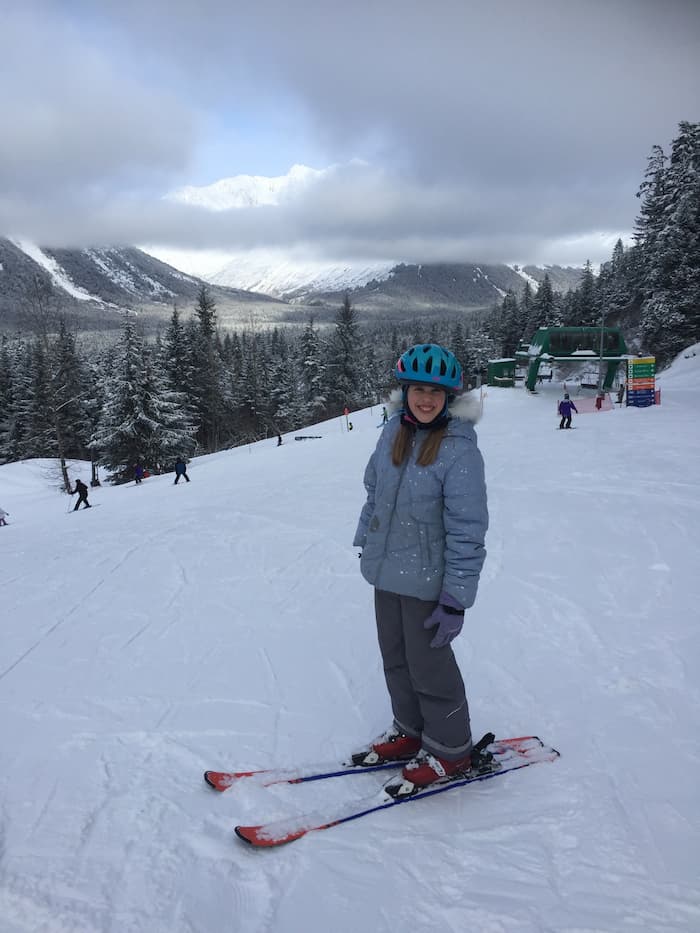An Awake Brain Surgery at Seattle Children’s Stops Jasmine’s Seizures
6.27.2023 | Casey Egan
 After a family trip to Finland last summer, Jasmine’s family became increasingly concerned about some unusual symptoms she was experiencing.
After a family trip to Finland last summer, Jasmine’s family became increasingly concerned about some unusual symptoms she was experiencing.
What started as occasional numbness in her lip or left side of her face last spring had progressed to twitching, which the family later learned were increasingly strong seizures.
Her family had been proactive in seeking help for Jasmine, who is now 13 years old. In Finland, they took her to a specialist, had lab tests performed and tried to adjust her diet and vitamin intake. They also took her to a chiropractor when she returned to their home in Alaska, but the symptoms did not let up.
Then, in September 2022, Jasmine’s father, Erik, found her having the most intense and longest seizure he had ever seen.
“Up to this point, she had never lost any of her awareness of what was going on,” Erik said. “That time, her eyes were open but it was like nobody’s home.”
After Jasmine slowly regained awareness, her family took her to the emergency room. Doctors had previously discovered a mass in Jasmine’s head back in 2016, but the family had been told that it was not a concern as long as it did not cause any problems. A new MRI revealed the mass, which they would later learn was a brain tumor, had grown.
Shortly after, a pediatric neurologist in Alaska told the family they would need to go to Seattle Children’s to seek treatment.
“The biggest wave of disbelief hit me and my wife, that it wasn’t going to be simple to resolve,” said Erik.
The family had multiple telehealth meetings with Dr. Jason Hauptman, a pediatric neurosurgeon at Seattle Children’s, before traveling to the hospital for treatment.
Dr. Hauptman put the family at ease and told them that Jasmine was going to be okay.
“That visit with him changed the whole dynamic,” said Erik. “It went from us feeling just so, so desperate to feeling full of hope and relieved that something could be done – that he could help us.”
Thankfully, Jasmine’s tumor was benign, but Hauptman told Jasmine’s family she would need surgery to remove the tumor to stop her seizures.
“We know kids who have brain tumors and also have epilepsy have a lower chance of responding to medication alone than other children with epilepsy who don’t have benign brain tumors or other brain abnormalities on their MRI,” said Hauptman. “For that reason, many times we find that we need to remove the brain abnormality to give our patients the best chance at a life without seizures.”
Hauptman recommended an awake craniotomy, a highly specialized procedure in which the patient is woken up during surgery and asked to perform language tasks to help preserve cognitive functions.
“The awake surgery uses techniques where we actually test how the patient moves, or is able to speak and read while the operation is actually going on, so that we can avoid those areas of the brain,” said Dr. Priya Monrad, director of the Epilepsy Monitoring Unit at Seattle Children’s.
Jasmine spoke with the surgical team about the Harry Potter movies during her procedure and can be heard recounting details of Harry Potter and the Sorcerer’s Stone while awake during her procedure.
Seattle Children’s is a leader in neurosurgeries. The organization has done 3,171 neurosurgeries in the last 5 years, which is more than any children’s hospital in our region.
In April 2022, Dr. Lindsey Morgan from Seattle Children’s was one of two people nationally to receive the quality improvement innovation award through the American Academy of Neurology, a prestigious award in the field of Neurology.
Seattle Children’s Neurosciences leaders head numerous national pediatric neurological steering committees and clinical research networks.
For Jasmine’s surgery, Monrad says electrodes were placed on the surface of her brain to measure electric activity. By waking her up, the team was able to test the electrodes on her brain to see if the brain electricity appeared irritated and prone to seizures.
“That helps us make sure that when we remove the tumor we aren’t harming anything important and if there’s any irritated areas around the tumor itself that were leading to epilepsy, that we can safely remove those too,” said Monrad.
Erik says the surgery went faster he’d anticipated. Around three hours after the procedure began Dr. Hauptman told him the procedure was successful.
After recovering in the hospital, Jasmine and Erik returned to the rest of their family in Alaska.

“Jasmine has recovered about as well as anyone could have hoped and she is really looking forward to summer, and the activities that 13-year-olds spend their time thinking about,” Erik said recently. “It’s been such a relief that the surgery and her recovery have both been successful.”
Hauptman says Jasmine is seizure free, without any neurological changes from the surgery, and expects her to be cured.
Although the Davidson family believes they’ll be able to handle all of Jasmine’s future medical appointments in Alaska, Erik says the Davidson family is “eternally grateful” for Seattle Children’s.
“There isn’t any amount of fame, fortune, glory or riches that could outweigh the value of what we’ve experienced at Seattle Children’s,” Erik said. “The blessing of being supported by people, helped by people, and hopefully having the entire condition resolved – we’re so grateful.”
Join us for Seattle Children’s 2nd annual Epilepsy Symposium on October 14, 2023. Experts from our Neurosciences Center will be discussing best practices to managing and treating epilepsy. Healthcare professionals and parents/caregivers of children with epilepsy are welcome to attend.
For more information, visit https://www.seattlechildrens.org/clinics/neurosciences/services/epilepsy-program/epilepsy-symposium/.